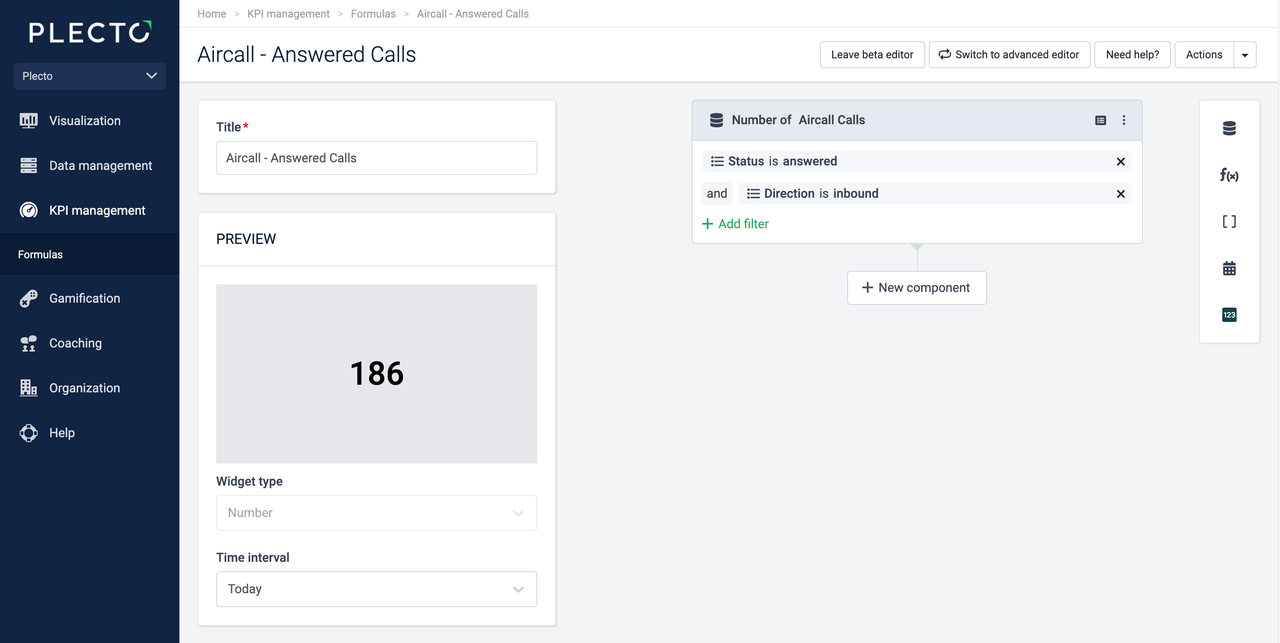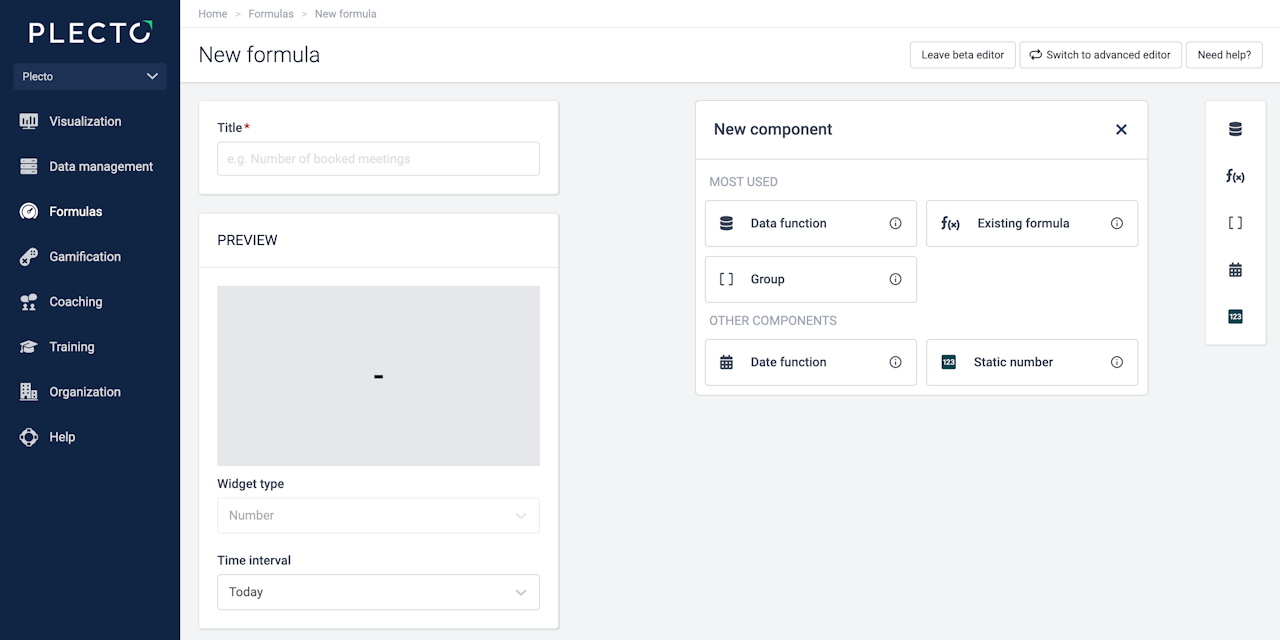
Understanding the data structure
Data in spreadsheets is usually organized in rows and columns. Plecto works in the same way, but we call the rows registrations and the columns fields.
Formulas take the raw data from data sources and convert it to metrics and various KPIs that you can use with Plecto dashboards, slideshows, contests, notifications, reports, and more!
When calculating a result, a formula generally selects a data source, narrows down which registrations to include in the calculations, checks which fields to look at, and calculates the result from the registration values.

Components = building blocks of your formulas
The formulas are built from components. A component can be a data function (number of, the sum of, average, and more), group, date function, another formula, or a static number. You can add as many components to your formulas as you need.
You can also add filters to get more specific results. For example, calculate the number of calls with the status "answered" or see how many leads are coming from a specific pipeline.
Number format
Number format needs to match your desired formula output. For example, if you want to display the latest customer name, you will choose Text.
The available formatting options are:
Text
Decimal number
Yes/No
Percent
Duration
Date and time
Date
Time since
Formulas don't define time periods – widgets do
Plecto formulas are logical expressions (How many deals are there? How many calls have been made?), and they are not bound to a specific time period, which allows formulas to be used universally across Plecto.
Framing your numbers (How many deals are there this month? How many calls have been made today?) happens directly on dashboard and report widgets.
Learn more
Read more about the formula editors in Plecto.

